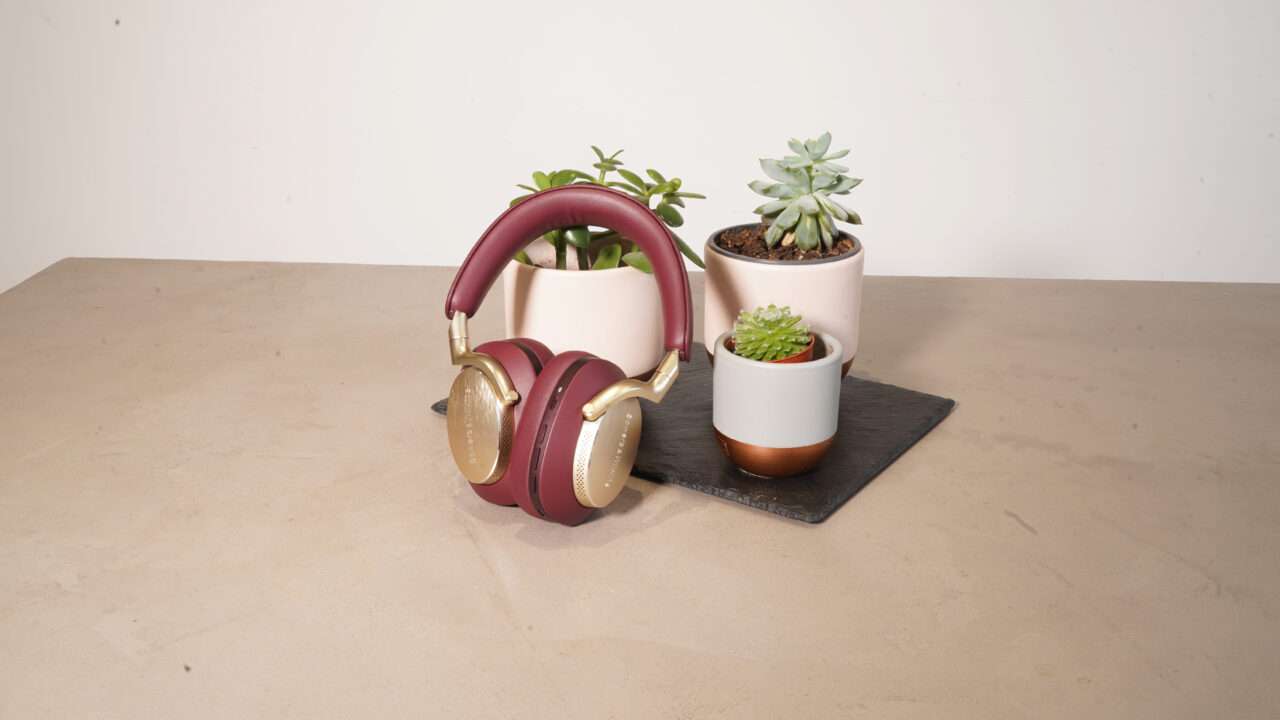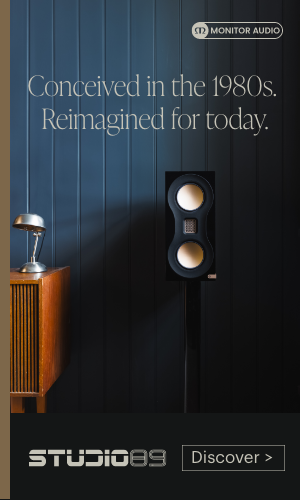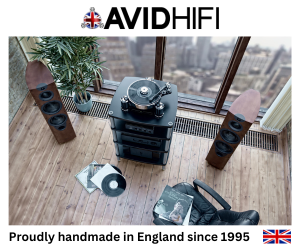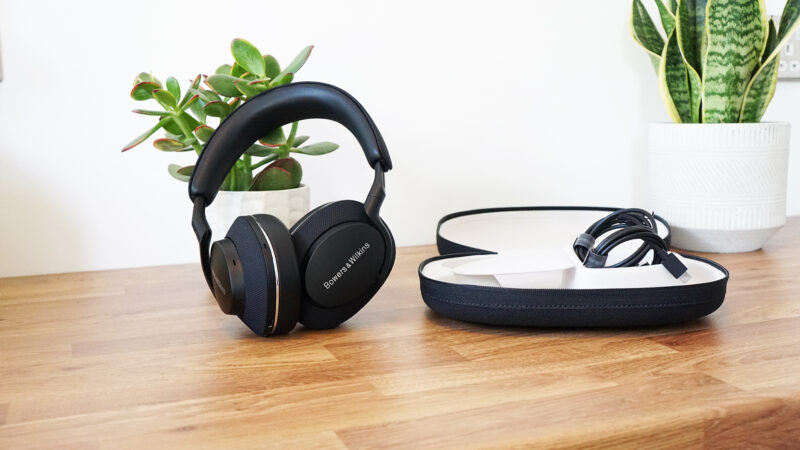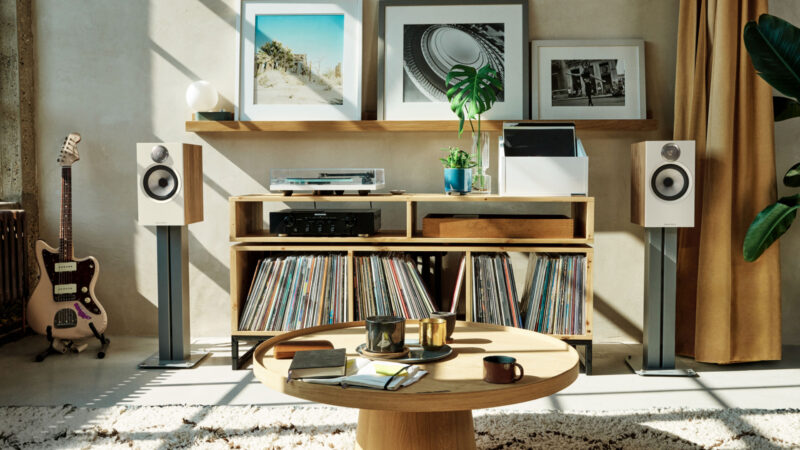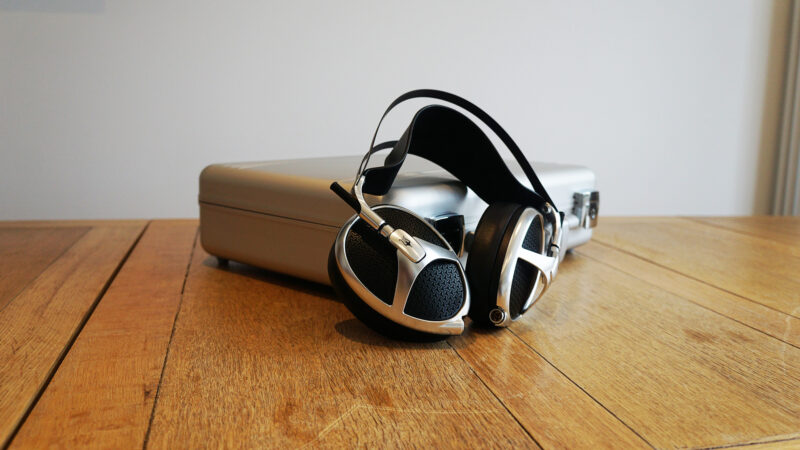What do you do when your younger brothers are so at the top of their game that they look like upstaging you? Because at first glance this is Px8’s problem.
So well received were the Px7 S2 and Px7 S2e models (at £379), offering something that looks almost identical from a few feet away yet costing a couple of hundred quid more may seem like a bit of a challenge for Bowers & Wilkins.
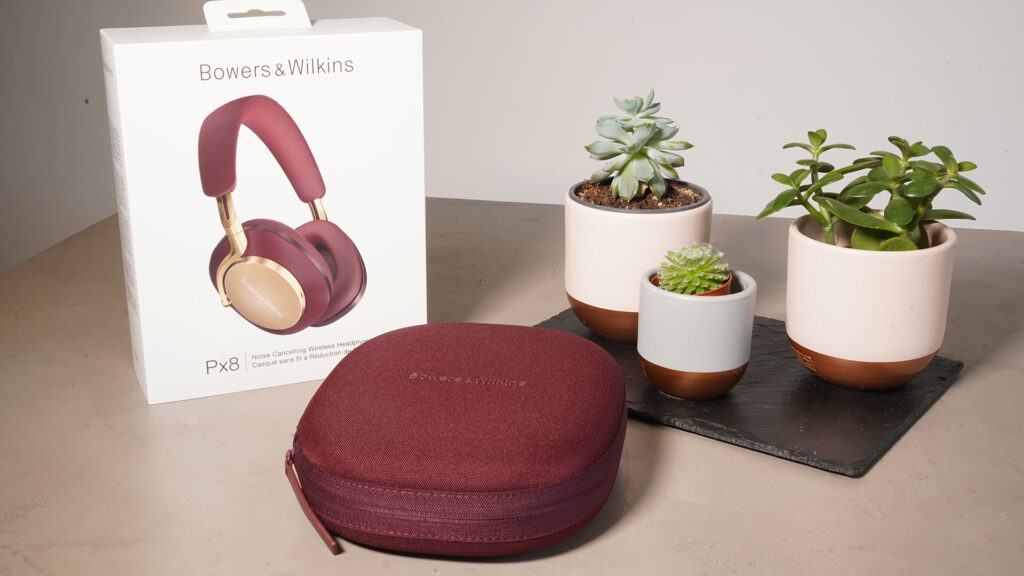
Also available in tan/silver and black, we opted for the Px8 in ‘Royal Burgundy’ finish to stand out from the crowd
But get up close and a little more personal with Bowers & Wilkins Px8 and the differences become clear.
It starts with the chunky leather tassel on the zipped rigid carry case in place of the Px7 S2’s fabric strip, that hints at a more refined product, honed from more luxurious and costly materials.

Headphone royalty from Bowers & Wilkins, with a colour scheme and luxury feel like that of a vintage Jag
Lifting the lid and the step up in quality is immediately obvious, with nappa leather applied to the back of the ear cup surrounds (as well as the front) and top of the headband, in place of the woven fabric that adorns the Px7 S2 models.
The other obvious difference is the gorgeous finish on the main ear cups, with brushed alloy and textured embossed branding, in place of the Px7 S2’s matt finish and printed moniker.

Going for gold, the Px8’s materials and finish are built to last, being a clear step up from Bowers’ cheaper offerings
Of course this being Bowers & Wilkins, as we saw with the recent 600 range re-launch, just focussing on more polished aesthetics to get your attention goes against the company grain, and evolving each product’s internal tech is equally if not more important.
And that’s exactly what the brand has done to elevate the Px8 above its cheaper siblings, by swapping out their 40mm full range bio cellulose drivers with ones made from carbon fibre. This makes them lighter yet stiffer, allowing for greater accuracy in their delivery. Add to this a fully optimised motor system with revised magnet, voice coil and surround, and it’s clear to see what really sets the Px8 apart.

The Px8’s carbon fibre drive unit (centre) with uprated motor unit and voice coil
And what this means in practise is that Bowers’ engineers are able to push the brand’s own 24-bit DSP (Digital Signal Processing) engine further, with less limitations in how their matching drive units will respond.
Yet despite these upgraded materials and internals, the Px8 weighs only 13g more than the lower spec’d Px7 S2 model (320g vs 307g).
Get cancelled
Elsewhere the tech remains the same with the drive unit angled towards your ear canals and Bluetooth support via the latest 5.2 codec, supporting AptX, Adaptive and HD signals (plus standard BT).
Noise cancelling is also the same sophisticated hybrid model we’ve seen previously, managed by four active mics per side, with two more per side for call handling.
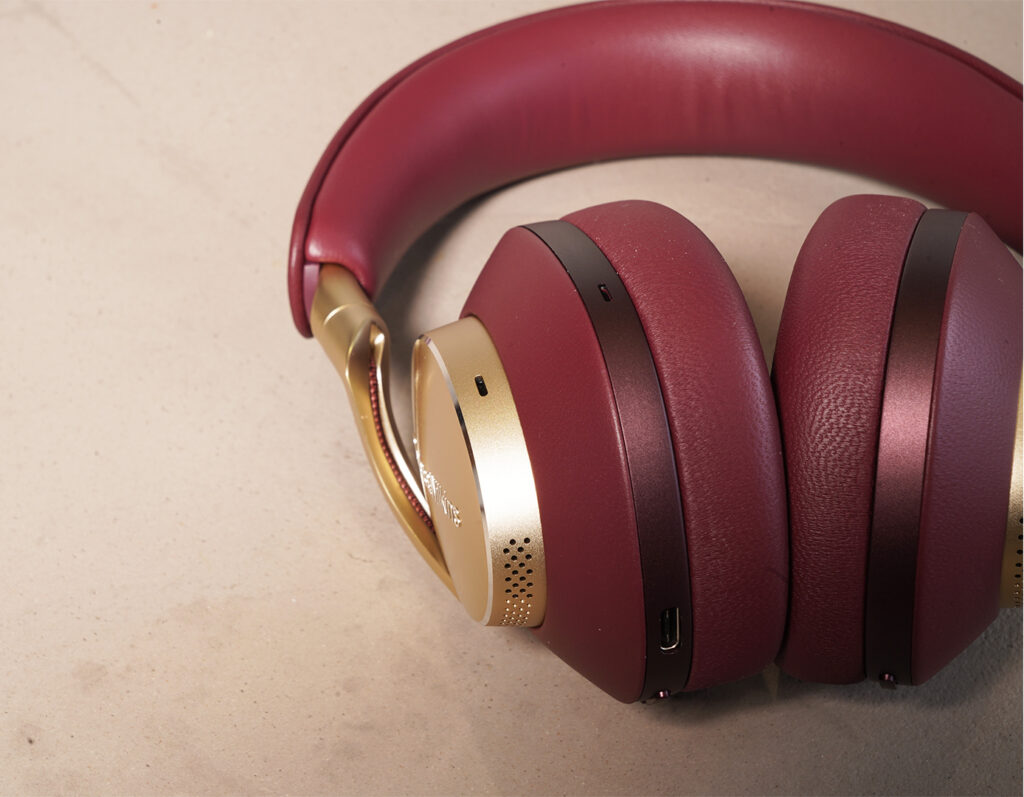
Look closely and you’ll note that even the internal headphone cable is both upgraded and braided in a matching finish, such is the attention to detail
Active Noise Cancelling (ANC) is on offer across three ‘environment control’ settings with ‘on’, ‘pass-through’ (allowing some ambient sounds through when you need to be more aware of your surroundings) and ‘off’ options.
Battery life is also the same as Bowers’ other over ear models, meaning seven hours for a full change (ie overnight) and a 15 minute quick charge option (for when you forgot to plug them in overnight!).
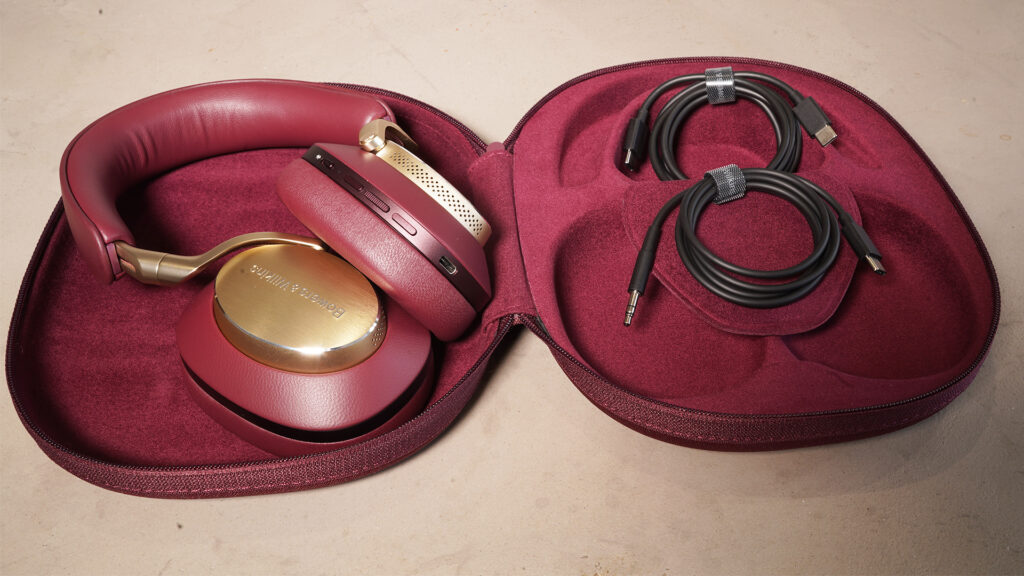
Internal compartment within the Px8 hides the all important supplied USB-C and 3.5mm cables
Supplied cables include the now industry standard USB-C for charging and hardwiring plus a 3.5mm analogue adapter, so legacy sources can still be supported.
Physical controls are via a combined power/pairing switch on the right ear cup, with separate buttons for volume up and down sandwiching a play/pause button with a textured surface, so you can differentiate them by feel.
The left ear cup hosts just one button for toggling through the three noise cancelling settings, each with their own audible jingle when selected to tell you what mode you’re in.

Bowers & Wilkins’ Music app offers streaming support plus a range of control settings, from firmware updates to tone adjustment, and it’s a doddle to use
Of course the way to get the best from these (and any Bowers and Wilkins connected cans) is via the brand’s dedicated Music app. Alongside quick start guides, software updates, ANC and control settings, it also offers separate treble and bass fine-tuning over a 12dB range.
Add to this integration with streaming apps including Qobuz and Tidal Connect makes it one of the best in the business.
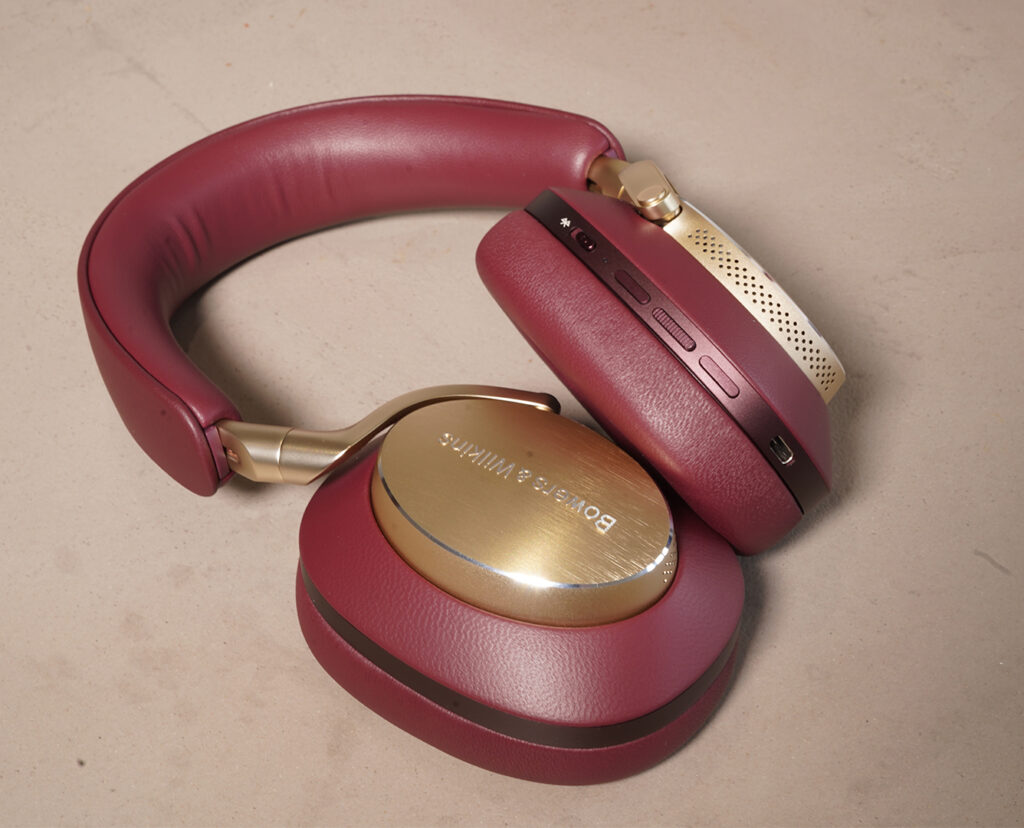
Right ear cup controls for power/connect, volume up, play/pause and volume down, plus the USB-C input
Performance
I’ve lived with Bowers & Wilkins Px7 S2 since we reviewed them back in August ’22, so comparing them with the Px8 is an obvious starting place.
Dialling in Lana Del Rey’s Let The Light In via Tidal Connect with ANC switched off immediately reveals what the Px8 brings to the silent disco. Streamed from my iPhone 13 and the Px8 has the same non-fatiguing all encompassing soundstage and sonic texture of the Px7 S2 model, but the instrument separation and realism has increased by some margin. To quote a well used but entirely accurate hifi metaphor, it genuinely is as though a veil I didn’t realised was there previously has been pulled back.

The Px8 rubbing shoulders with their cheaper Px7 S2e stable mates in ocean blue finish at this year’s UK Hi-Fi Show Live
Make way for Michi
Curious to know how far the Px8 can be pushed means taking my iPhone out of the audio chain in favour of the headphone output on a reference Michi X5 integrated amp, fed via a Primare NP30/NP5 Prisma MKII streaming package (hooked up via balanced connections).
While partnering a pair of £600 cans with an amp costing ten times as much may seem a bit of a leap, the Michi is an exceptionally clean and neutral performer, which ensures the Bowers can stretch their sonic wings unhindered, and hearing David Munyon’s 2004 album More Songs For Planet Earth at 16-bit/44kHz via Qobuz shows just how far they fly.
By the third track in Malcomb Wood, the Bowers show no sign of being daunted. The finger picked guitar work sounds every bit as delicate and well rounded via the Px8 as it does hearing it via my reference Dynaudio floorstanders, showing how little those full range carbon drivers give away.
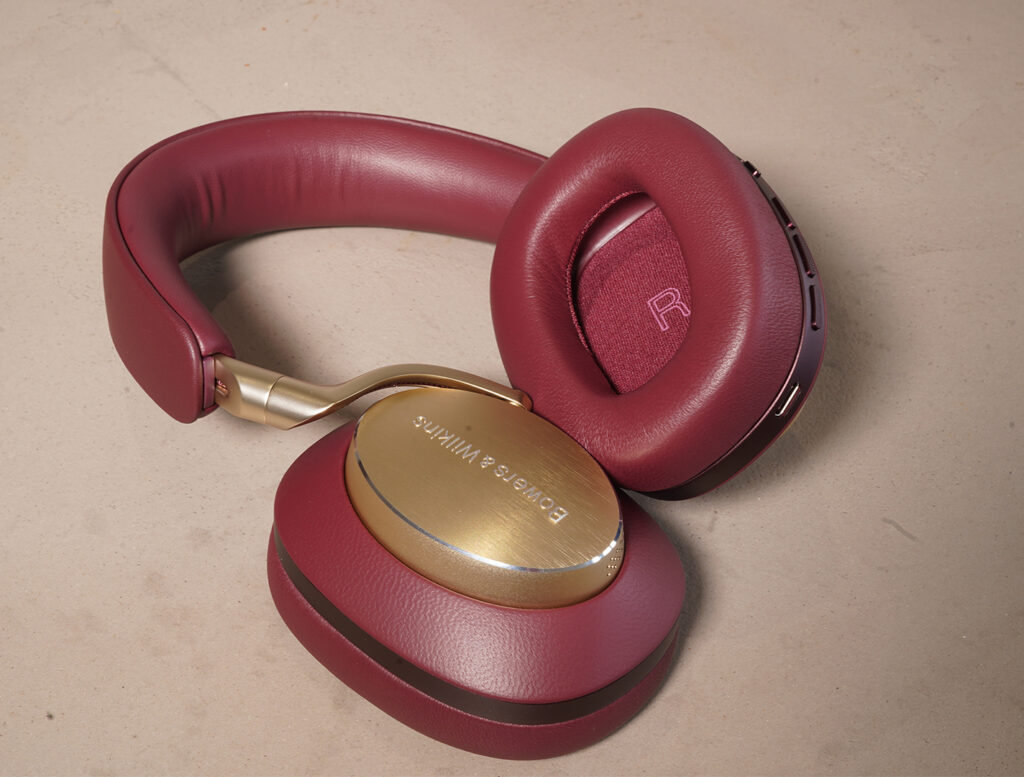
Labelled and angled ear cups means you’ll be hearing the Px8 as the good folk at Bowers intended
Testing the Px8 with a more thorough dynamic workout comes courtesy of Jame’s Blake’s Big Hammer with its futuristic rhythms and layers of imposing beats and lyrics. On lesser cans this track can be left sounding a little flat and two-dimensional, but via the Bowers there’s plenty of soundstage depth and nuance to render a dense and expansive 3D image (enough to challenge my preconceptions of what closed-back cans can muster).
This is impressive enough given the price, but it’s the stop/start timing of the instrumentation that really elevates the Px8 out of the headphone mainstream territory into a truly rewarding hifi experience, and at this price so far south of four figures, that’s praise indeed.
In Summary
Don’t be fooled into thinking the Px8 is just a Px7 S2 in more lavish clobber, because while the materials are clearly uprated, its the musical delivery where the real differences lie.
At under £400, the Px7 S2 are the wireless cans to beat, but less price constraints means Bowers has been able to build more a mature and sophisticated performer in the Px8, making it ideal for quality music on the move and dedicated home listening alike. As big brothers go, this is one to look up to.


